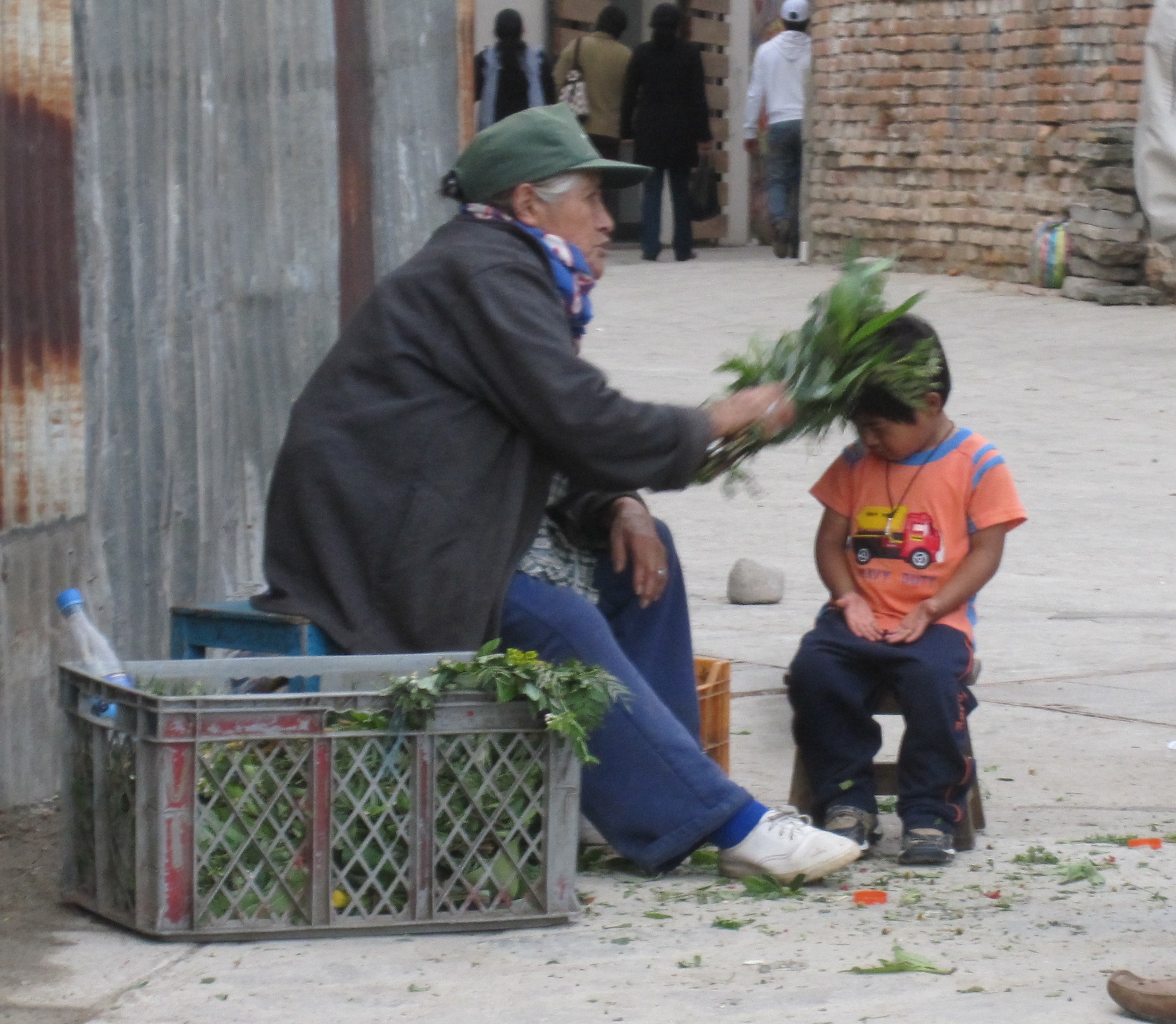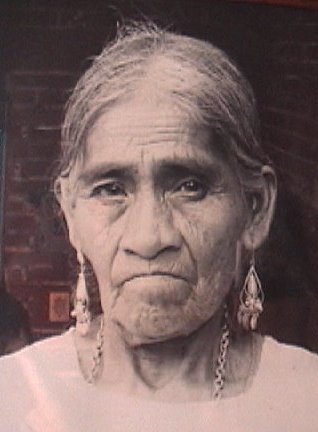|
Huautla De Jiménez
Huautla de Jimenez is a town and municipality in the Mexican state of Oaxaca. It is part of the Teotitlán District in the north of the Cañada Region. The name Huautla comes from the Náhuatl. The town is called "Tejao" (also Eagle's Nest) in the Mazatec language. "De Jiménez" was added to honor General Mariano Jiménez, who was the first governor of the state of Oaxaca in 1884 and the first official to arrive on Mazateca lands. He founded the town Huautla de Jiménez, which is now the municipality's seat. The origin of the town is unknown, but tribute documents show that it was the largest town in the Mazatec region during the late Postclassic period, when the town paid tribute to the Aztec empire. The municipality Geography The municipality possesses a territorial extent of 71.45 km2. It is located to the northwest of the capital of the state of Oaxaca and it bordered to the north by Santa María Chilchotla and San José Tenango. Tehuacan is the nearest city and abo ... [...More Info...] [...Related Items...] OR: [Wikipedia] [Google] [Baidu] |
Municipalities Of Oaxaca
Oaxaca is a state in Southwest Mexico that is divided into 570 municipalities, more than any other state. According to Article 113 of the state's constitution, the municipalities are grouped into 30 judicial and tax districts to facilitate the distribution of the state's revenues, although they may not currently function as per their intended purpose. It's the only entity in Mexico with this particular organization. According to the 2020 Mexican Census, it is the tenth most populated state with inhabitants and the 5th largest by land area spanning . Municipalities in Oaxaca are administratively autonomous of the state according to the 115th article of the 1917 Constitution of Mexico. Every three years, citizens elect a municipal president ( es, links=no, presidente municipal) by a plurality voting system who heads a concurrently elected municipal council () responsible for providing all the public services for their constituents. The municipal council consists of a variable n ... [...More Info...] [...Related Items...] OR: [Wikipedia] [Google] [Baidu] |
Seeking The Magic Mushroom
"Seeking the Magic Mushroom" is a 1957 photo essay by amateur mycologist Robert Gordon Wasson describing his experience taking psilocybin mushrooms in 1955 during a Mazatec ritual in Oaxaca, Mexico. Wasson was one of the first Westerners to participate in a Mazatec ceremony and to describe the psychoactive effects of the ''Psilocybe'' species. The essay contains photographs by Allan Richardson and illustrations of several mushroom species of ''Psilocybe'' collected and identified by French botanist Roger Heim, then director of the French National Museum of Natural History. Wasson's essay, written in a first person narrative, appeared in the May 13 issue of ''Life'' magazine as part three of the "Great Adventures" series. The essay was part of three related works about mushrooms released around the same time period. It was preceded by the limited release of ''Mushrooms, Russia and History'', a two-volume book by Wasson and his wife, Valentina Pavlovna Wasson. The ''Life'' magazi ... [...More Info...] [...Related Items...] OR: [Wikipedia] [Google] [Baidu] |
Psilocybe Mushrooms
''Psilocybe'' ( ) is a genus of gilled mushrooms, growing worldwide, in the family Hymenogastraceae. Most or nearly all species contain the psychedelic compounds psilocybin and psilocin. Taxonomy Taxonomic history A 2002 study of the molecular phylogeny of the agarics indicated that the genus ''Psilocybe'' as then defined was polyphyletic, falling into two distinct clades that are not directly related to each other. The blue-staining hallucinogenic species constituted one clade and the non-bluing species the other. The previous type species of the genus, ''Psilocybe '' (now Deconica montana), was in the non-bluing clade, but in 2010 the type species was changed to '' P. semilanceata'', a member of the bluing clade. A 2006 molecular phylogenetic study of the Agaricales by Matheny and colleagues, further demonstrated the separation of the bluing and non-bluing clades of ''Psilocybe'' in a larger, strongly supported phylogenetic tree of the Agaricales. ''Psilocybe'' had ... [...More Info...] [...Related Items...] OR: [Wikipedia] [Google] [Baidu] |
Curandera
A ''curandero'' (, healer; f. , also spelled , , f. ) is a traditional native healer or shaman found primarily in Latin America and also in the United States. A curandero is a specialist in traditional medicine whose practice can either contrast with or supplement that of a practitioner of Western medicine. A curandero is claimed to administer shamanistic and spiritistic remedies for mental, emotional, physical and "spiritual" illnesses. Some curanderos, such as Don Pedrito, the Healer of Los Olmos, make use of simple herbs, waters, or mud to allegedly affect their cures. Others add Catholic elements, such as holy water and pictures of saints; San Martin de Porres for example is heavily employed within Peruvian curanderismo. The use of Catholic prayers and other borrowings and lendings is often found alongside native religious elements. Still others, such as Maria Sabina, employ hallucinogenic media. Many curanderos emphasize their native spirituality in healing while being p ... [...More Info...] [...Related Items...] OR: [Wikipedia] [Google] [Baidu] |
María Sabina
María Sabina Magdalena García (22 July 1894 – 22 November 1985) was a Mazatec ''curandera'', shaman and poet who lived in Huautla de Jiménez, a town in the Sierra Mazateca area of the Mexican state of Oaxaca in southern Mexico."Sabina Rothenberg 2003, p. x Her healing sacred mushroom ceremonies, called ''veladas'', were based on the use of psilocybin mushrooms, particularly ''Psilocybe caerulescens'', a sacred mushroom important to the Mazatecs. María Sabina's veladas contributed to the popularization of indigenous Mexican ritual use of entheogenic mushrooms among westerners, though this was not her intent. Life and death María Sabina was born outside of Huautla de Jiménez in the Sierra Mazateca toward the end of the 19th century. Though Sabina herself was not sure, she believed her birth year was 1894. Her parents were both '' campesinos''; her mother was María Concepción, while her father, Crisanto Feliciano, died from an illness when she was three years old. She ha ... [...More Info...] [...Related Items...] OR: [Wikipedia] [Google] [Baidu] |
Huautla De Jimenez , Oaxaca, the deepest cave system in the Western Hemisphere
{{Geodis ...
Huautla could mean any of the following locations in Mexico: *Huautla, Hidalgo in central-eastern Mexico *Huautla, Morelos in South-Central Mexico *Sierra de Huautla, a mountain range in south-central Mexico *Huautla de Jiménez, Oaxaca *San Miguel Huautla, Oaxaca *Sistema Huautla Sistema Huautla is a cave system in the Sierra Mazateca mountains of the southern Mexican state of Oaxaca. it was the deepest cave system in the Western Hemisphere, from top to bottom, with over 55 miles of mapped passageways. Location Siste ... [...More Info...] [...Related Items...] OR: [Wikipedia] [Google] [Baidu] |
Jobo
''Spondias mombin'', also known as yellow mombin or hog plum is a species of tree and flowering plant in the family Anacardiaceae. It is native to the tropical Americas, including the West Indies. The tree was introduced by the Portuguese in South Asia in the beginning of the 17th century. It has been naturalized in parts of Africa, India, Nepal, Bangladesh, Sri Lanka, The Bahamas, Indonesia, and other Caribbean islands. It is rarely cultivated except in parts of the Brazilian Northeast. The mature fruit has a leathery skin and a thin layer of pulp. The seed has an oil content of 31.5%. Description ''Spondias mombin'' is a small deciduous tree up to high and in girth, and is moderately buttressed. Its bark is thick, corky, and deeply fissured. When slashed, it is pale pink, darkening rapidly. Branches are low and branchlets are glabrous. The leaves are pinnate, with 5-8 leaflets opposite pairs with a terminal leaflet, , oblong or oblong lanceolate, broadly acuminate, ... [...More Info...] [...Related Items...] OR: [Wikipedia] [Google] [Baidu] |
Bursera Simaruba
''Bursera simaruba'', commonly known as gumbo-limbo, copperwood, chaca, West Indian birch, naked Indian, and turpentine tree, is a tree species in the family Burseraceae, native to the Neotropics, from South Florida to Mexico and the Caribbean to Brazil, Nicaragua, and Venezuela. ''Bursera simaruba'' is prevalent in the Petenes mangroves ecoregion of the Yucatán, where it is a subdominant plant species to mangroves. Specimens may be found along the western coast of Florida. Description ''Bursera simaruba'' is a small to medium-sized tree growing to 30 meters tall, with a diameter of one meter or less at 1.5 meters above ground.Foster (2007) The bark is shiny dark red, and the leaves are spirally arranged and pinnate with 7-11 leaflets, each leaflet broad ovate, 4–10 cm long and 2–5 cm broad. Gumbo-limbo is semi-evergreen. The gumbo-limbo is referred to, humorously, as the tourist tree because the tree's bark is red and peeling, like the skin of the sunburnt to ... [...More Info...] [...Related Items...] OR: [Wikipedia] [Google] [Baidu] |
Holly Oak
''Quercus ilex'', the evergreen oak, holly oak or holm oak is a large evergreen oak native to the Mediterranean region. It is a member of the ''Ilex'' section of the genus, with acorns that mature in a single summer. Description An evergreen tree of large size, attaining in favourable places a height of , and developing in open situations a huge head of densely leafy branches as much across, the terminal portions of the branches usually pendulous in old trees. The trunk is sometimes over in girth. The young shoots are clothed with a close gray felt. The leaves are very variable in shape, most frequently narrowly oval or ovate-lanceolate, long, 1.2–2.5 cm wide, rounded or broadly tapered at the base, pointed, the margins sometimes entire, sometimes (especially on young trees) more or less remotely toothed. When quite young, both surfaces are clothed with whitish down, which soon falls away entirely from the upper surface leaving it a dark glossy green; on the lower s ... [...More Info...] [...Related Items...] OR: [Wikipedia] [Google] [Baidu] |
Liquidambar
''Liquidambar'', commonly called sweetgum (star gum in the UK), gum, redgum, satin-walnut, or American storax, is the only genus in the flowering plant family Altingiaceae and has 15 species. They were formerly often treated in Hamamelidaceae. They are native to Southeast and east Asia, the eastern Mediterranean and eastern North America. They are decorative deciduous trees that are used in the wood industry and for ornamental purposes. Etymology Both the scientific and common names refer to the sweet resinous sap (''liquid amber'') exuded by the trunk when cut. Species Extant species Fossils * †'' Liquidambar changii'' - Miocene (Washington state, North America) Description They are all large, deciduous trees, tall, with palmately 3- to 7-lobed leaves arranged spirally on the stems and length of , having a pleasant aroma when crushed. Their leaves can be many colors such as bright red, orange, yellow, and even purple. Mature bark is grayish and vertically groove ... [...More Info...] [...Related Items...] OR: [Wikipedia] [Google] [Baidu] |
INEGI
The National Institute of Statistics and Geography (INEGI by its name in es, Instituto Nacional de Estadística, Geografía e Informática) is an autonomous agency of the Mexican Government dedicated to coordinate the National System of Statistical and Geographical Information of the country. It was created on January 25, 1983, by presidential decree of Miguel de la Madrid. It is the institution responsible for conducting the Censo General de Población y Vivienda every ten years; as well as the economic census every five years and the agricultural, livestock and forestry census of the country. The job of gathering statistical information of the Institute includes the monthly gross domestic product, consumer trust surveys and proportion of commercial samples; employment and occupation statistics, domestic and couple violence; as well as many other jobs that are the basis of studies and projections to other governmental institutions. The Institute headquarters are in Aguascal ... [...More Info...] [...Related Items...] OR: [Wikipedia] [Google] [Baidu] |





.jpg)

.jpg)
